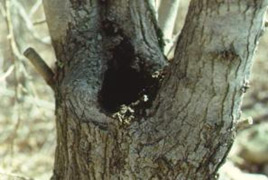Habitat
Aedes aegypti mosquitos are documented to have originated from Africa but have subsequently developed a global population distribution in the early years of transatlantic trade (Mousson, 2005). A. aegypti vectors of the dengue fever are now spotted in numerous tropical and subtropical regions across South America, Africa, Southern Asia, and the Mediterranean area.
Known Habitats
Within its home region of Africa, A. aegypti is virtually ubiquitous within all regions as long as it has the correct nutrients and temperature to survive. These mosquitos can be found in contact with human settlements and have been recorded breeding within small, low-level villages to large-scale metropolises; however, this species of mosquitos are certainly not limited to areas in close proximity to humans as long as they have other species to feed on. Open savannahs, up to 3 miles away from human habitats, have also been documented to be well suited to A. aegypti breeding populations. Other geographic landforms in Africa that are documented as mosquito breeding sites include the southern rainforest belt, the western Cameroon Mountains, the Niger Delta, and the higher regions of the central plateau (Surtees, 1967).
Larvae Populations
 Larvae of A. aegypti are also
recorded to have a wide spread presence and have been proven to be
highly adept at thriving in areas that would not be ideal to other
animal species. A. aegypti larvae seem to only be inhibited by the
nutritional quantity of their habitat. If the nutritional
requirement has been met, A. aegypti can spawn in both clear
drinkable water and water that is heavily contaminated with
pollutants. “Potential breeding sites” serves as a very loose term
when discussing A. aegypti as long there is a water source, a yeast
food supply, and the correct temperature (>10 degrees Celsius) to
successfully spawn (Weissman-Strum and Kindler, 1962). A list of
breeding sites for these larvae can include anything from
tree-holes, domestic containers, snail shells, fallen leaves, to
wells.
Larvae of A. aegypti are also
recorded to have a wide spread presence and have been proven to be
highly adept at thriving in areas that would not be ideal to other
animal species. A. aegypti larvae seem to only be inhibited by the
nutritional quantity of their habitat. If the nutritional
requirement has been met, A. aegypti can spawn in both clear
drinkable water and water that is heavily contaminated with
pollutants. “Potential breeding sites” serves as a very loose term
when discussing A. aegypti as long there is a water source, a yeast
food supply, and the correct temperature (>10 degrees Celsius) to
successfully spawn (Weissman-Strum and Kindler, 1962). A list of
breeding sites for these larvae can include anything from
tree-holes, domestic containers, snail shells, fallen leaves, to
wells.
Seasonal Preference
In contribution to larvae populations, wet seasons increase the population density for A. aegypti larvae in Africa and the Mediterranean. If the theory that South American vectors are in close relation to their African ancestors is to be believed, South America may also experience similar mosquito blooms during its wet periods. Adult mosquitos are also heavily abundant during the summer and autumn seasons while also maintaining a seasonal prevalence during the corresponding winter months of their region (Holstein, 1967). However, with as little studies on this subject as there are, it cannot be assumed that A. aegypti population trends are in direct relation to seasonal change.
Urbanization
In contrast to the minor impact of seasonal change, significant population density shifts have been attributed to the rapid urbanization in Africa and the Mediterranean area. Urbanization has not only increased levels of hygiene among people residing in urban zones, but it has also increased sanitation practices in closed water systems that carry waste. Increasing levels of water maintenance means that the amount of yeast food sources have dwindled causing lower overall populations for A. aegypti larvae (Surtees, 1967). While population densities have steadily decreased in the more human-concentrated areas, urbanization has also facilitated the travel of A. aegypti on a global scale.


